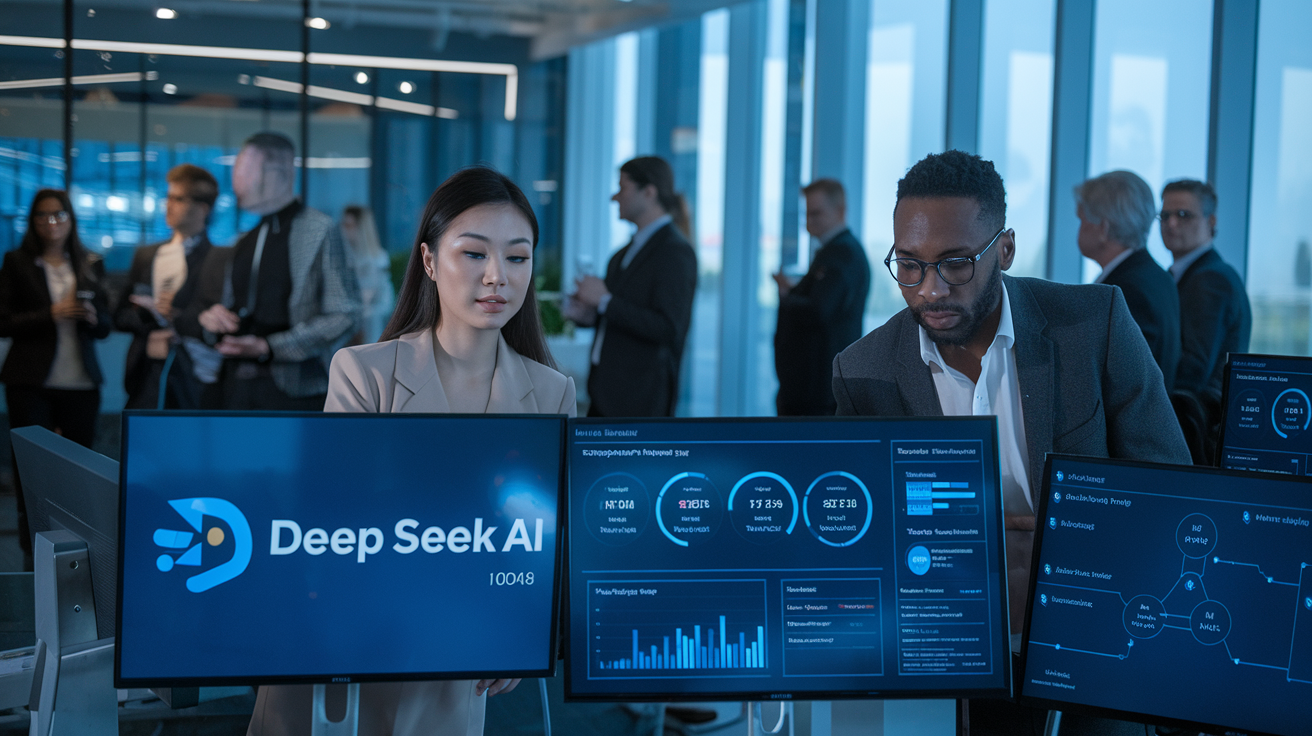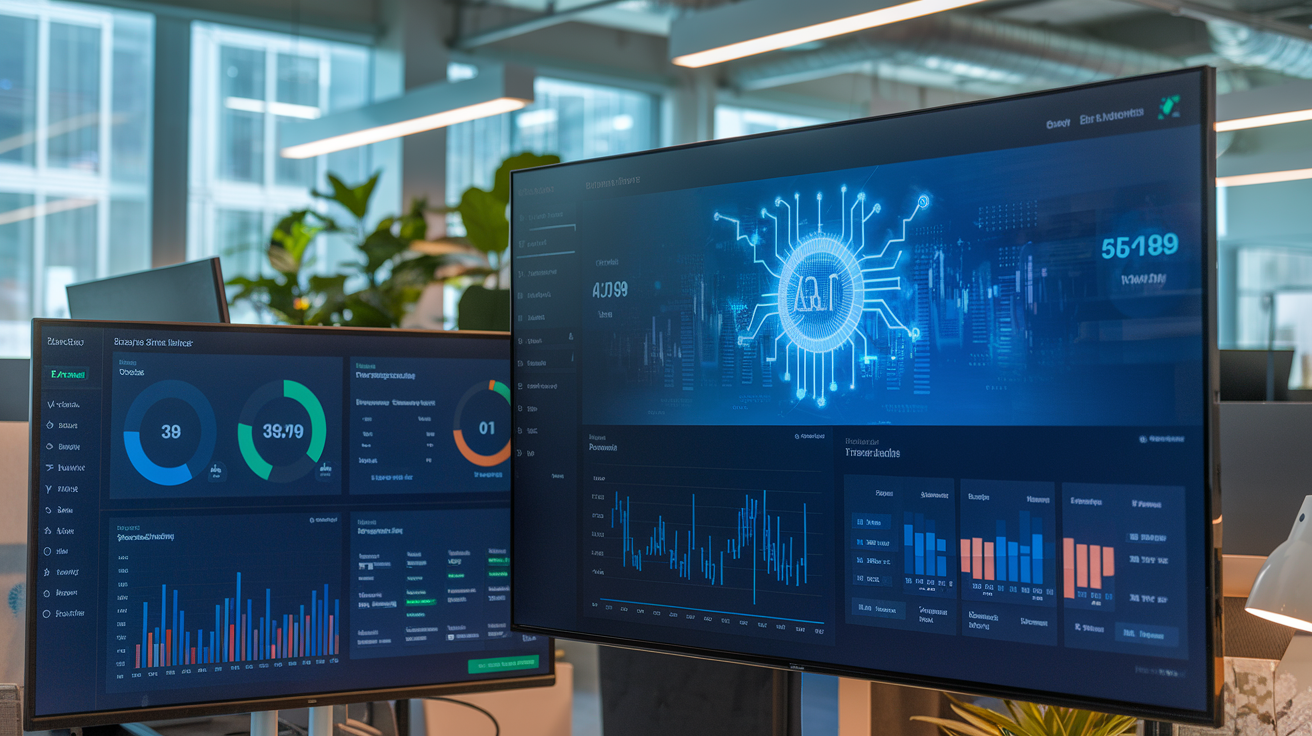How Deep Seek AI is Transforming Data Analysis
Ever stared at a mountain of data and thought, “There’s gold in here—if only I could find it faster”? You’re not alone. Data scientists spend nearly 80% of their time just prepping and cleaning data before analysis even begins.
Deep Seek AI is changing that painful reality. This powerhouse tool doesn’t just analyze your data—it transforms how you interact with it, making complex analysis accessible to professionals without PhD-level expertise.
The deep learning capabilities behind Deep Seek AI allow it to process and interpret massive datasets in ways traditional analytics tools simply can’t match.
But here’s what might surprise you: it’s not just about faster results. What happens when your AI doesn’t just crunch numbers but actually helps you ask better questions?
About the authors

The Minds Behind Deep Seek AI
Behind Deep Seek AI stands a powerhouse team of data scientists and AI researchers who’ve spent their careers pushing the boundaries of what’s possible with machine learning.
The platform was developed by a collaborative team led by Dr. Sarah Chen, who previously headed AI research at Stanford’s Data Analytics Lab. Her work on predictive algorithms has been cited over 500 times in peer-reviewed journals.
“We built Deep Seek because we were frustrated with existing tools that couldn’t handle complex, multi-dimensional datasets without requiring a PhD to operate,” says Chen.
Working alongside Dr. Chen is Marcus Winters, former lead developer at TensorFlow, who architected Deep Seek’s intuitive interface that makes advanced analytics accessible to non-technical users.
The team also includes Priya Narayan, a data visualization expert whose previous work at The New York Times digital lab earned her multiple design awards. Her influence is evident in Deep Seek’s interactive dashboards that transform complex data into actionable insights.
What sets this team apart is their hybrid background – combining rigorous academic credentials with real-world business experience. Before Deep Seek, they collectively consulted for Fortune 500 companies, helping solve data challenges across finance, healthcare, and retail sectors.
Their diverse perspectives ensure Deep Seek remains both technically powerful and genuinely useful for everyday business decisions.
Emerging roles for AI in strategy

AI as the Strategic Co-Pilot
The days of AI being just a fancy calculator are gone. Deep Seek AI is now sitting at the strategy table, helping executives make decisions that actually move the needle.
When your business is drowning in data from a dozen different sources, Deep Seek doesn’t just organize it – it spots patterns human analysts might miss after weeks of squinting at spreadsheets.
Take competitive analysis. Traditional methods might require months of research. Deep Seek can analyze competitor websites, social media, and market reports overnight, highlighting strategic gaps you can exploit by next week.
Predictive Strategy Development
Here’s where things get interesting. Deep Seek doesn’t just tell you what happened yesterday – it helps you see around corners.
A retail chain using Deep Seek might discover that specific weather patterns in certain regions correlate with product demand spikes – information they can use to optimize inventory before their competitors even notice the trend.
Risk Assessment and Mitigation
Business leaders hate surprises (the expensive kind, anyway). Deep Seek AI excels at scanning the horizon for potential disruptions.
It can simulate thousands of business scenarios based on market variables, helping companies develop robust contingency plans. A manufacturing company might use Deep Seek to identify supply chain vulnerabilities before they become expensive problems.
The magic happens when Deep Seek moves beyond number-crunching to become a true strategic partner – less like a calculator, more like having a team of analysts working 24/7 with perfect recall and zero bias.
Considerations for strategy leaders deploying AI

Strategic Implementation Challenges
Jumping into Deep Seek AI for data analysis? Hold up. Your strategy team needs to be ready for some real challenges.
First off, let’s talk talent. The skills gap isn’t just a buzzword—it’s a legitimate roadblock. Your team needs people who understand both the business context and the technical capabilities of Deep Seek. Without this hybrid expertise, you’re basically handing a Ferrari to someone with a learner’s permit.
Then there’s the data quality issue. Deep Seek is powerful, but garbage in still means garbage out. How clean is your data? How consistent? How comprehensive? If you’re dealing with siloed data pockets or inconsistent formatting, address that before you start feeding it to your AI systems.
Ethical Governance Framework
The ethical dimension isn’t optional anymore. It’s business-critical.
Your strategy needs clear guidelines on:
- Data privacy protections
- Bias mitigation strategies
- Transparency in AI decision-making
- Regular ethical audits
Without these guardrails, you’re exposing your organization to serious reputational and regulatory risks. Remember when that major retailer’s AI started making biased hiring recommendations? That PR nightmare cost them millions.
Bottom line: Deep Seek AI can transform your data analysis, but strategy leaders need to approach implementation with eyes wide open. The technology is ready—the question is: are your organization’s foundations solid enough to support it?
Moving forward

The Future of Deep Seek AI
Deep Seek AI isn’t just a flash in the pan—it’s dramatically reshaping how businesses handle massive datasets. As we look ahead, several key developments are taking shape:
Democratized Data Analysis
The real game-changer? Deep Seek is putting advanced AI capabilities into the hands of non-technical users. Soon, marketing teams will run complex predictive models without bothering the data science department. Customer support reps will instantly analyze sentiment patterns across thousands of tickets.
Integration with Existing Systems
Companies are already connecting Deep Seek with their CRMs, ERPs, and marketing platforms. This creates a seamless flow where insights don’t just sit in reports—they trigger actions. When the AI spots a purchasing trend, inventory systems adjust automatically.
Specialized Industry Solutions
We’re seeing Deep Seek variants tailored for healthcare, finance, and manufacturing emerge. These specialized models understand industry jargon and regulatory requirements right out of the box.
Ethical AI Frameworks
Smart organizations aren’t just asking “can we?” but “should we?” The next wave of Deep Seek implementation will include stronger privacy protections, bias detection, and transparency in how conclusions are reached.
The companies gaining the biggest advantage aren’t just deploying Deep Seek—they’re reshaping their entire decision-making culture around it. Data-driven isn’t just a buzzword when your AI can process information faster than any human team.

Artificial intelligence has reshaped the landscape of data analysis, with Deep Seek AI standing at the forefront of this transformation. As we’ve explored throughout this post, AI is creating new strategic roles that organizations must adapt to, shifting from traditional analytics to more sophisticated, predictive approaches that can uncover previously invisible patterns and opportunities.
Strategy leaders looking to implement Deep Seek AI solutions should carefully consider governance structures, skill development needs, and ethical implications. By thoughtfully addressing these considerations while embracing AI’s analytical capabilities, organizations can gain competitive advantages through enhanced decision-making processes. The future belongs to those who can effectively blend human strategic thinking with AI-powered analytical precision—start your journey today by evaluating where Deep Seek AI can most effectively support your organization’s strategic goals.


